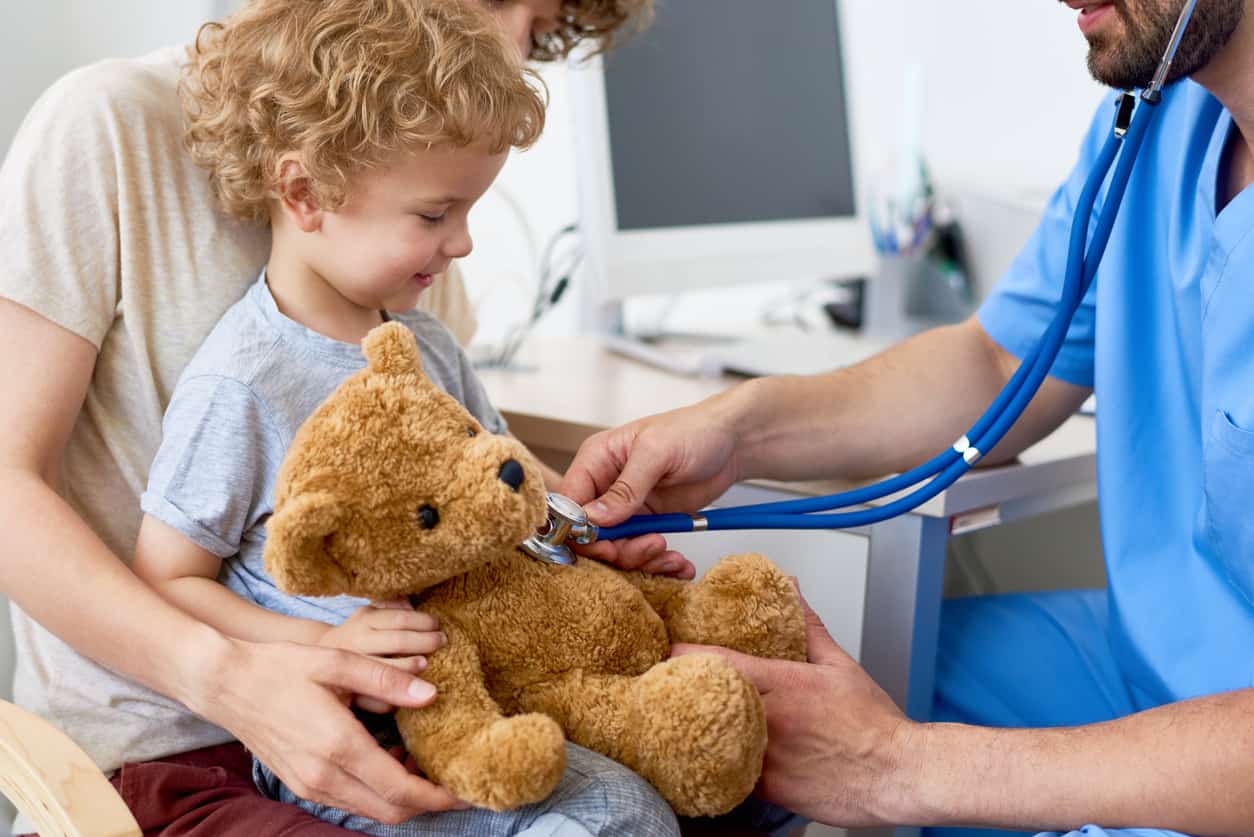Any time your child becomes sick or injured, it can be scary. You may not know what to do. Should you take him or her to the doctor? Do they need to go to the emergency room? If you have any question at all about your child’s health, you should call his or her doctor or visit an emergency facility.
Always call 911 with any conditions which threaten a child’s life.
Here are a few common pediatric concerns to look out for:
Fever
Children 4 weeks of age or younger who have a fever of 100.4 degrees or higher, parents should immediately take the child to an emergency center.
Infants between 4 and 8 weeks of age with fever of 100.4 degrees or higher should be taken to an emergency center if the infant is acting sick, otherwise contact your pediatrician’s office for instructions.
Children older than 8 weeks with a fever of 100.4 degrees or higher, parents should contact their pediatrician or seek an after hours facility. If your child is vaccinated there is less of a chance of a serious illness, if unvaccinated there is a much higher chance your child has a serious illness.
Children older than 6 months of age with a fever of 100.4 or higher can often be treated during the first 24 to 48 hours with medicine to reduce fever for comfort (Acetaminophen or Ibuprofen) and fluids to maintain hydration.
You should always contact your physician or consider visiting an after hours facility if fever persists for more than 24 to 48 hours, or if your child looks sick despite attempting fever reduction. https://allymedical.com/locations/
Respiratory Distress
Children having difficulty breathing often show signs that they are not getting enough oxygen, indicating respiratory distress. This is a list of some of the signs that may indicate that your child is not getting enough oxygen. It is important to learn the signs of respiratory distress to know how to respond appropriately:
- Breathing rate. An increase in the number of breaths per minute may indicate that a person is having trouble breathing or not getting enough oxygen.
- Increased heart rate. Low oxygen levels may cause an increase in heart rate.
- Color changes. A bluish color seen around the mouth, on the inside of the lips, or on the fingernails may occur when a person is not getting as much oxygen as needed. The color of the skin may also appear pale or gray.
- Grunting. A grunting sound can be heard each time the person exhales. This grunting is the body’s way of trying to keep air in the lungs so they will stay open.
- Nose flaring. The openings of the nose spreading open while breathing may indicate that a person is having to work harder to breathe.
- Retractions. The chest appears to sink just below the neck and/or under the breastbone with each breath — one way of trying to bring more air into the lungs.
- Sweating. There may be increased sweat on the head, but the skin does not feel warm to the touch. More often, the skin may feel cool or clammy. This may happen when the breathing rate is very fast.
- Wheezing. A tight, whistling or musical sound heard with each breath may indicate that the air passages may be smaller, making it more difficult to breathe.
- Stridor. A sound heard in the upper airway when the child breathes in.
- Accessory muscle use. The muscles of the neck appear to be moving when your child breathes in.
- Changes in alertness. Low oxygen levels may cause your child to act more tired and may indicate respiratory fatigue.
With ANY signs of respiratory distress, always consult your child’s primary care provider or go to an emergency center. https://allymedical.com/locations/
Dehydration
Infants and small children can become dehydrated quickly.
Contact your doctor or go to an emergency facility https://allymedical.com/locations/ if your child has any of the following:
-
- Dry mouth
- Crying without tears
- No urine output for over a period of four to six hours
- Sunken eyes
- Blood in the stool
- Vomiting for more than 24 hours, or vomiting that is consistently green in color
- Fever higher than 103 F (39.4 C)
- Less activity than usual
- Urination much less than usual
- If your child is lethargic (difficult to awaken)
- If your child is complaining of severe abdominal pain
- If your child’s mouth looks dry
Other conditions that should be treated at an emergency center include but not limited to:
- Bleeding that won’t stop
- Extensive or complicated cuts or lacerations
- Fainting or head injury with loss of consciousness or disorientation
- Major fracture that breaks the skin or is at a severe angle
- Seizures without a previous diagnosis of epilepsy
- Serious burns
- Snake bites
- Sudden change in mental state
- Sudden shortness of breath or difficulty breathing
https://www.kxan.com/studio-512/learn-more-about-pediatric-care-with-ally-medical-emergency-room/
https://www.texaschildrens.org/blog/2016/05/help-do-i-take-my-child-emergency-center-or-urgent-care
https://www.chop.edu/conditions-diseases/signs-respiratory-distress-children
https://www.emedicinehealth.com/dehydration_in_children/article_em.htm



